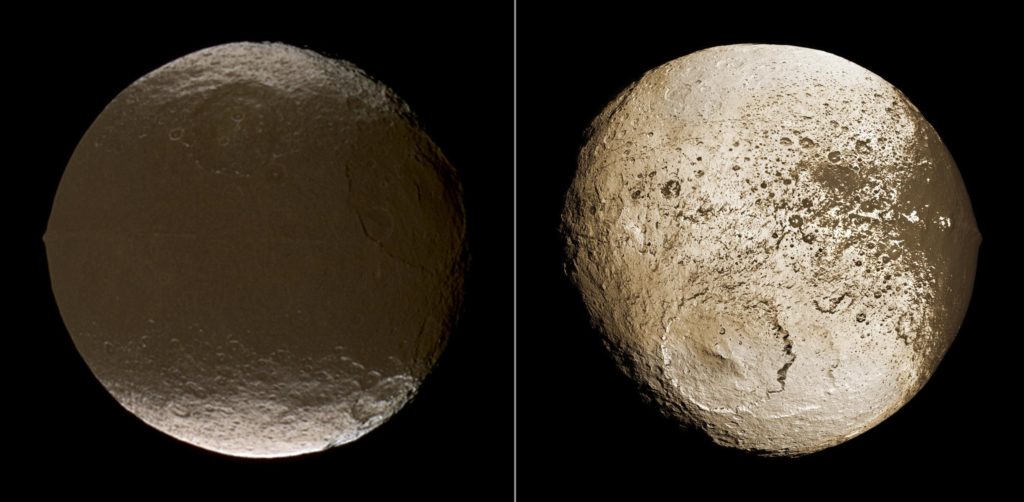
Photo: Two global images of Iapetus showing the extreme differences in brightness on its surface | NASA/JPL-Caltech/Space Science Institute
Iapetus is the 3rd largest of Saturn’s 82 moons, coming in behind Titan (1,599.9 mi) and Rhea (474.6 mi) with a radius of 456.4 miles. Because one of its hemispheres is dark in color and the other is light, this unusual natural satellite is often referred to as the “yin and yang” of Saturn’s moons. Astronomers theorize that this unique two-tone coloration is a result of one side of Iapetus’ surface gathering particles from Phoebe, one of Saturn’s dark moons. Another popular theory is that the dark material is residue left over from water and ice evaporating from the surface, as Iapetus’ dark side receives more exposure to sunlight than the other.

The light side of Iapetus | NASA
Iapetus orbits at a staggering distance of 2,213,000 miles away from Saturn’s surface, much further than any of the ringed planet’s other moons. It remains in orbit due to the strength of Saturn’s gravitational pull, the sheer force of which creates interesting effects on the moons that orbit closer to the planet’s surface. For example, Saturnian moon Enceladus is home to a number of volcanoes that erupt ice instead of lava. Astronomers theorize that this strange phenomenon is a result of water vapor being squeezed out of the moon’s core by Saturn’s tidal forces,1 exiting through cracks in the surface and freezing upon contact with the vacuum of space.
Iapetus was first spotted by Italian astronomer Giovanni Cassini in 1671. Cassini observed that Iapetus’ brightness varied as it orbited around Saturn, but its two-toned coloration wouldn’t be confirmed until more than 300 years later when the 1980-1981 Voyager missions gathered the first close-up images of the moon’s surface.
1 A force that stretches a body towards and away from the center of mass of another body due to a difference in strength in the gravity of another body. For example, the push and pull of our Moon’s gravitational force on Earth’s oceans is what causes the tides to change.